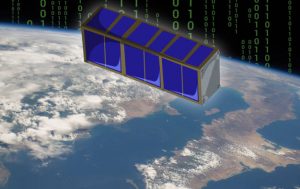
Called QlevEr, the system is designed for 6U (100 x 200 x 300mm) Earth observation CubeSats, reducing link bandwidth by processing images into simplified binary maps before transmission to the ground.
“There is scope for this arrangement to be employed in a range of potential applications,” according to Teledyne. “These include deforestation tracking, which is the primary use case, but also the monitoring of volcanic activity, evaluation of damage caused by natural or man-made disasters, growth in urbanisation, glacial movement analysis and oceanic investigation, as well as possible defence related tasks.”
Artificial intelligence is used, through an algorithm developed by the Multidisciplinary Institute in Artificial Intelligence (MIAI) at the Université Grenoble Alpes.
Processing is in a 1.8GHz 64bit Teledyne quad-core Qormino QLS1046-Space module, which has Arm Cortex A72 cores alongside 4Gbyte of DDR4 memory.
Imaging data is captured using a 16Mpixel Emerald CMOS sensor, also from Teledyne.
“To ensure that Qormino is robust enough to deliver long-term operation when exposed to space conditions, and mitigate the threat of errors occurring, modules are subjected to qualification, screening and radiation characterisation,” said Teledyne. “These cover both the processor and the accompanying memory. The modules can cope with total ionizing dose levels above 100kRad and have single event latch-up resilience beyond 60MeV.cm2/mg. An operational temperature range of -55°C to +125°C is supported.”
QlevEr Sat demo is the latest development from a collaboration between CSUG and Teledyne e2v that was established four years ago.
Teledyne project page
Centre Spatial Universitaire de Grenoble
Multidisciplinary Institute in Artificial intelligence
Space Tech Expo is next week in Bremen